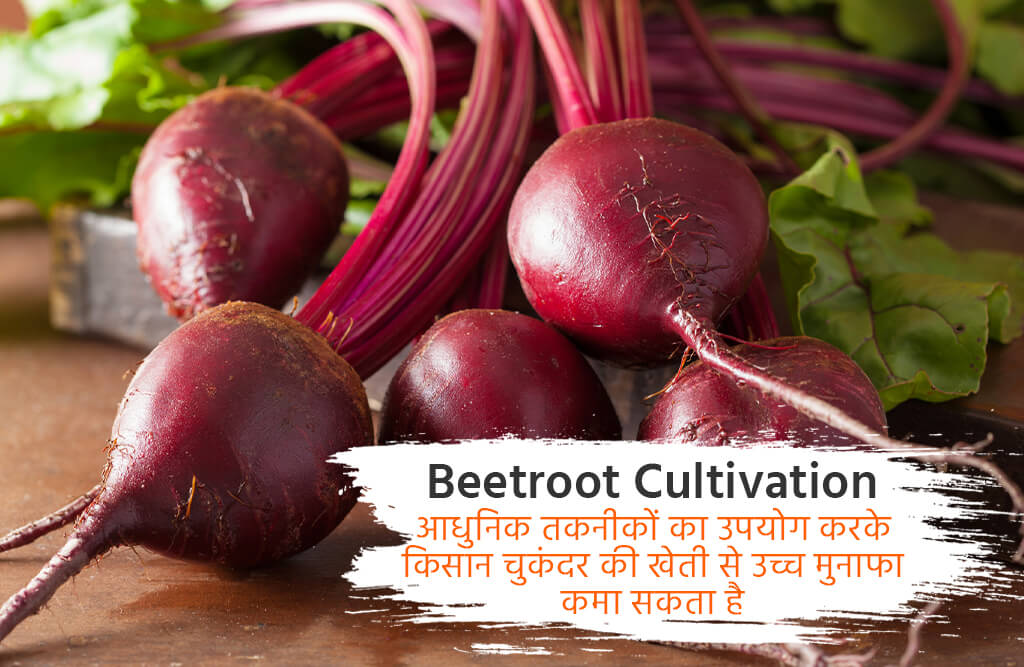
Beetroot, a fruit that adds color to our kitchens throughout the year, is not only beneficial for our health but also opens up new and lucrative opportunities for farmers. Whether consumed as a vegetable after cooking or enjoyed raw with its natural sweetness, beetroot is truly versatile. Referred to as 'sweet vegetable,' its taste is mildly sweet, making it a culinary favorite. With its roots nestled beneath the soil and leaves usable as a vegetable, beetroot offers various nutritional elements beneficial for the human body. Doctors often recommend incorporating beetroot into one's diet due to its potential health benefits. Known to combat issues such as anemia, constipation, acidity, and disorders related to the liver, heart, and kidneys, beetroot has gained recognition as a wholesome addition to meals. It can be consumed in salads, juices, or cooked as a vegetable. Given its high demand, beetroot cultivation presents a lucrative option for our farming community. Not only does it contribute to a farmer's income, but it also aligns with the growing preference for healthy and organic produce. By adopting modern farming techniques and choosing high-quality seeds, farmers can enhance the productivity of beetroot cultivation. The simplicity of its farming practices, coupled with its nutritional richness, makes beetroot an attractive choice for both consumers and farmers.
Beetroot, a short-duration crop, proves to be highly profitable for farmers within a remarkably short period. Post the cultivation of beetroot, the crop is ready for harvest in just 120 days, equivalent to 3 months. Depending on the varieties of beetroot plants, farmers can yield between 150 to 300 quintals per hectare. The market price for beetroot varies between 20 to 50 rupees per kilogram, depending on the variety and quality of the produce. Engaging in beetroot cultivation on one hectare of land can enable farmers to earn a substantial income ranging from two to three lakhs.
The utilization of innovative techniques in beetroot cultivation has become a crucial step towards smart farming. It is essential to plan the sowing time based on local weather conditions, soil quality, and natural composition. For successful beetroot cultivation, deep plowing is necessary, followed by leaving the field open for a specific duration to allow sunlight to reach the soil. As beetroot plants develop on the surface, absorbing minerals becomes challenging. Therefore, while preparing the beetroot field, it is crucial to provide an adequate quantity of fertilizer. Applying 15 loads of well-decomposed cow dung to the plowed field, followed by cultivating with a cultivator and performing two to three shallow plows to mix the fertilizer well with the soil, is recommended. After incorporating the fertilizer into the soil, irrigate the field and leave it untouched for 4 to 5 days. Once the soil appears dry on the surface, dense plowing with a rotavator should be carried out. Adopting these smart farming practices can undoubtedly enhance beetroot cultivation, ensuring both high-quality produce and increased profits for farmers.
Planting Method: For smart beetroot cultivation, deep plowing should be done in the field, and it should be left open for some time to allow sunlight to reach the soil. Beetroot plants develop on the surface of the soil, making it challenging for their roots to absorb minerals from deeper layers.
Fertilizer Support: While preparing the beetroot field, it is crucial to provide an adequate quantity of fertilizer. Mixing well-decomposed cow dung into the soil by applying 15 loads to the plowed field using a cultivator is recommended.
Smart Cultivation: After incorporating the fertilizer into the soil, irrigate the field and leave it untouched for 4 to 5 days. When the soil appears dry on the surface, perform dense plowing with a rotavator.
Technical Study: Conducting a study on the latest farming techniques and implementing them is essential for achieving better beetroot productivity. This includes selecting high-quality seeds and using the right farming practices for optimal results.
Suitable climate and temperature for sugar beet cultivation : Cold regions are considered suitable for beetroot cultivation, and the winter season is conducive to the growth of its plants. Beetroot crops do not require excessive rainfall, making them less susceptible to the impact of excessive precipitation. The germination of beetroot plants requires a moderate temperature, and a temperature of 20 degrees Celsius is considered suitable for their development. The ideal soil for beetroot cultivation is loamy or sandy loam. It is advisable not to cultivate beetroots in waterlogged soil, as this may lead to issues like fruit rot. For sowing beetroot seeds, a cool climate is considered appropriate. Therefore, the sowing of seeds should be done in the months of October and November. Before sowing the seeds, they should be treated to reduce the risk of diseases affecting the seedlings.
Advanced Varieties of Beetroot:
Impact of Monsoon on Beetroot Cultivation: The cultivation of beetroot is directly influenced during the monsoon season. Regions with cooler climates are considered suitable for beetroot cultivation, and the winter season proves to be favorable for the development of its plants. Beetroot crops do not require excessive rainfall, as it can adversely affect their yield. Adequate irrigation is necessary, and the quantity of water should be moderated after seed germination. Properly managing the effects of the monsoon in the climate can significantly benefit beetroot cultivation. By appropriately timing and regulating the impact of the monsoon, beetroot farming can yield a good harvest, providing farmers with substantial profits.